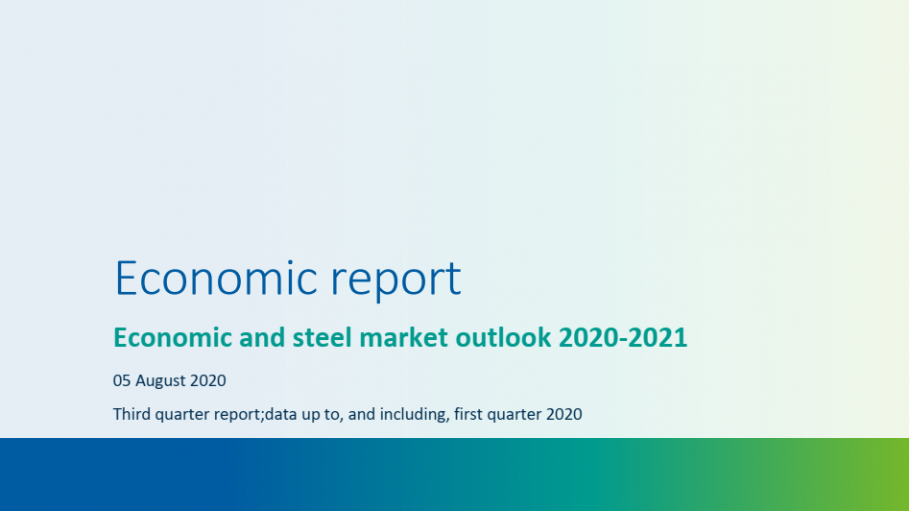
Publications » Economic and market outlook » Economic and steel market outlook 2020-2021, third quarter
Economic and steel market outlook 2020-2021, third quarter
Downloads and links
Recent updates

The COVID-19 pandemic has slashed steel consumption forecasts as well as the overall economic outlook across the EU and the world. Shutdown measures implemented by governments starting from March 2020 have hugely impacted manufacturing activity and steel-using industrial sectors, although these measures have been almost completely removed – or broadly eased - at the time of writing. This has affected the automotive sector in particular, but it and other industries had already been experiencing subdued developments in the second half of 2019 due to the downslide of the manufacturing sector in the EU, escalating trade wars between the US and several of its main trading partners and persistent uncertainty regarding Brexit. All of these factors combined led to continued further deterioration in business sentiment and curbed investment growth throughout 2019, even before the onset of the pandemic.
Actual data for apparent consumption reported here refers to the first quarter of 2020, which only partly reflect the effects of the pandemic on the industry and the economy as severe lockdown measures were only implemented across most EU members states from the second half of March 2020.
However, economic prospects and steel consumption outlook reflect the dramatic deterioration due to the expected consequences of the pandemic. The outlook for this year and for 2021 is particularly affected by the Covid-19 related disruption and is likely to be revised again later in the year in EUROFER’s later quarterly outlooks.
At the time of writing, lockdown measures had been almost completely removed or considerably eased in most EU member states, which had allowed industrial activity to restart. The implementation of the containment measures that had been put in place in EU member states led to an almost complete shutdown of industrial activity in the second half of March and in April. The unprecedented nature of this crisis makes uncertainty and volatility surrounding possible developments in the coming months means still high.

Download this publication or visit associated links
Strasbourg, 17 December 2025 – The European Commission’s latest proposals on the Carbon Border Adjustment Mechanism (CBAM), unveiled today, correctly identify several loopholes that risk undermining its effectiveness, notably regarding EU exports, downstream sectors and circumvention practices. However, despite these laudable efforts, the measures put forward fail to deliver a comprehensive and durable response to carbon and jobs leakage, warns the European Steel Association (EUROFER).
A milestone occasion to quickly and effectively restore affordable electricity, to relaunch the
decarbonization and strengthen the international competitiveness of the European steel
industry.
Brussels, 02 December 2025 – Unchanged negative conditions – U.S. tariffs and trade disruptions, economic and geopolitical tensions, protracted weak demand and still high energy prices – continue to weigh on the European steel market. EUROFER’s latest Economic and Steel Market Outlook confirms for 2025 another recession in both apparent steel consumption (-0.2%, unchanged) and steel-using sectors (-0.5%, revised from -0.7%). A potential recovery is expected only in 2026 for the Steel Weighted Industrial Production index (SWIP) (+1.8%, stable) and for apparent steel consumption (+3%, slightly revised from +3.1%) – although consumption volumes would still remain well below pre-pandemic levels. Steel imports retained historically high shares (27%), while exports plummeted (-9%) in the first eight months of 2025.